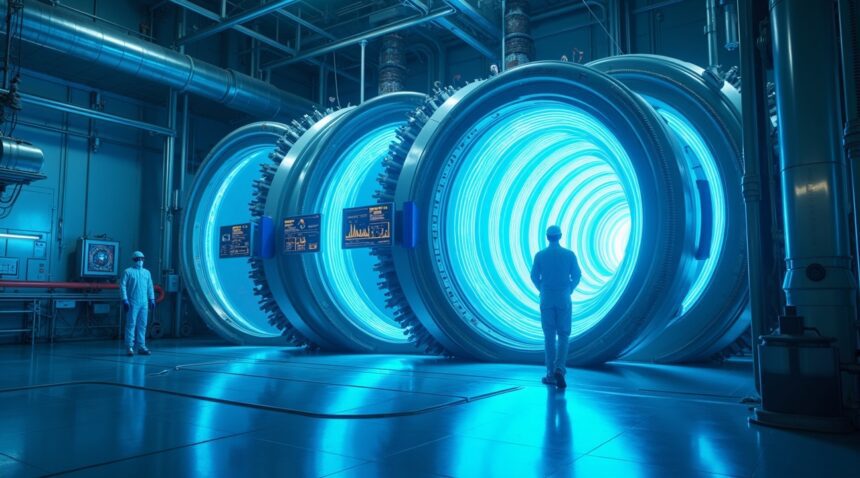Proxima Fusion’s Alpha reactor stands as Germany’s most ambitious fusion energy project, targeting net energy gain by 2031 through cutting-edge stellarator technology.
Key Takeaways
- Stellarator design eliminates plasma disruptions – The quasi-isodynamic configuration operates without external current drive, enabling steady-state power generation. This ensures a stable source of baseload electricity in contrast to intermittent renewable sources.
- Record European fusion investment – Proxima Fusion secured €130 million in Europe’s largest private fusion funding round. By 2025, total project funding is expected to exceed €185 million, reflecting strong investor confidence.
- Aggressive commercial timeline – The Alpha reactor is on track to demonstrate net fusion energy by 2031. Component development is scheduled to begin in 2026, with grid-scale electricity delivery anticipated throughout the 2030s.
- Advanced materials and breeding technology – The reactor will utilize a lithium-lead breeding blanket targeting a 1.07 tritium breeding ratio to ensure fuel self-sufficiency. It also features high-temperature superconducting magnets that generate magnetic fields of up to 20 tesla.
- Building on proven research foundation – The Alpha reactor benefits from decades of research pioneered by the Wendelstein 7-X facility, which achieved an eight-minute continuous plasma record and attracted €1.3 billion in European research investment.
Alpha Reactor Set to Achieve Net Fusion Energy by 2031
Proxima Fusion’s Alpha reactor represents a groundbreaking step forward in the quest for clean, limitless energy. The company, established in 2023 as a spin-off from the prestigious Max Planck Institute for Plasma Physics, has set an ambitious timeline to demonstrate net fusion energy by 2031. This prototype reactor isn’t just another research project—it’s designed to prove that stellarator fusion technology can deliver practical electricity to the grid during the 2030s.
The Alpha reactor employs a quasi-isodynamic stellarator design, a sophisticated approach that offers distinct advantages over traditional tokamak reactors. Stellarators maintain steady-state operation without the risk of plasma disruptions that can plague other fusion technologies. This design is particularly promising because it eliminates the need for external current drive, making the reactor inherently more stable and commercially viable.
Proxima Fusion’s development roadmap follows a strategic three-phase approach that balances innovation with practical engineering requirements. Component development takes center stage between 2026 and 2028, focusing on critical systems like superconducting magnets, plasma heating systems, and advanced materials capable of withstanding the extreme conditions inside the reactor. Construction of the Alpha reactor itself will commence in 2029 and continue through 2031, culminating in the demonstration of net energy gain.
Strategic Timeline and Commercial Goals
The company’s timeline aligns perfectly with Europe’s climate-neutral energy objectives, positioning Germany as a leader in fusion technology deployment. Key milestones include:
- Component testing and optimization phase (2026–2028)
- Alpha reactor construction and assembly (2029–2031)
- Net fusion energy demonstration by 2031
- Grid-scale electricity delivery throughout the 2030s
This aggressive schedule reflects confidence in stellarator technology while acknowledging the engineering challenges ahead. Proxima Fusion aims to build the world’s first commercial fusion power plant, directly competing with other scientific breakthrough initiatives worldwide.
The company’s vision extends beyond mere energy production to creating scalable fusion electricity systems that can be replicated across Europe and globally. Each Alpha reactor will serve as a proof-of-concept for larger commercial plants, demonstrating that fusion energy can transition from laboratory curiosity to grid-scale reality. The quasi-isodynamic design offers particular advantages for commercial deployment because it reduces operational complexity while maintaining high energy output efficiency.
Germany’s support for this initiative reflects its commitment to energy independence and climate leadership. The Alpha reactor will feed electricity directly into the German grid, providing clean baseload power that complements renewable sources like wind and solar. Unlike intermittent renewables, fusion reactors can operate continuously, delivering consistent power regardless of weather conditions.
Proxima Fusion’s spin-off status from the Max Planck Institute provides access to decades of plasma physics research and expertise. This foundation accelerates development timelines while reducing technical risks associated with unproven technologies. The institute’s research has already validated key stellarator principles, giving the Alpha reactor project a significant head start over competitors starting from scratch.
The broader European energy landscape will benefit enormously from successful Alpha reactor deployment. As countries phase out fossil fuels and nuclear fission plants, fusion technology offers a clean alternative that produces no long-lived radioactive waste or carbon emissions. The technology promises to revolutionize energy markets while supporting the transition to sustainable electricity generation.
Financial backing for the Alpha reactor project demonstrates growing confidence in fusion technology’s commercial viability. Investors recognize that successful deployment could capture significant market share in the rapidly expanding clean energy sector, particularly as governments implement stricter emissions regulations and carbon pricing mechanisms.
The Alpha reactor’s success will likely catalyze additional fusion projects across Europe and beyond, establishing Germany as a fusion technology hub. This positioning could attract international partnerships and investment while creating high-value manufacturing jobs in the clean energy sector. The project represents more than technological achievement—it’s an investment in Europe’s energy future and economic competitiveness in the emerging fusion economy.
https://www.youtube.com/watch?v=exampleURL
Revolutionary Stellarator Design Promises 24/7 Clean Energy Without Disruptions
Germany’s cutting-edge stellarator design represents a fundamental shift in fusion technology, utilizing Modular High-Field Magnets that generate an impressive 20 teslas through high-temperature superconducting technology. This configuration enables the reactor to maintain a compact footprint while delivering extraordinary magnetic field strength, addressing one of fusion energy’s most persistent challenges.
Eliminating Plasma Disruptions Through Advanced Magnetic Confinement
The stellarator’s most significant advantage lies in its operation without plasma current, a feature that sets it apart from traditional tokamak designs. I find this particularly compelling because it eliminates the risk of plasma disruptions that plague other fusion approaches, enabling truly continuous power generation. This scientific breakthrough means the reactor can provide steady-state baseload power that complements renewable energy sources without the intermittency issues that challenge grid stability.
Advanced AI-assisted simulations drive the engineering process, allowing rapid design iterations that optimize magnetic field configurations with unprecedented precision. This computational approach accelerates development timelines while ensuring optimal plasma confinement performance.
Innovative Materials and Breeding Technology
The reactor incorporates several groundbreaking components that ensure both efficiency and safety:
- A water-cooled lithium-lead breeding blanket achieves a tritium breeding ratio of 1.07, ensuring fuel self-sufficiency
- EUROFER97 steels provide exceptional structural resilience under extreme operating conditions
- An advanced island divertor system manages heat loads effectively while protecting reactor components
- Modular construction principles reduce manufacturing complexity and enable standardized production
This tritium breeding ratio exceeds unity, meaning the reactor produces more fuel than it consumes—a critical milestone for commercial viability. The breeding blanket design ensures long-term fuel independence while maintaining operational safety standards.
The compact, modular architecture delivers significant economic advantages through reduced construction costs and accelerated deployment schedules. Unlike massive traditional fusion facilities, this design enables factory manufacturing of key components, dramatically improving quality control and reducing on-site construction time. The modular approach also facilitates maintenance operations and component replacement without extended shutdowns.
This stellarator’s ability to provide uninterrupted power output makes it ideally suited for baseload electricity generation, filling the gap left by intermittent renewable sources. The continuous operation capability, combined with the reactor’s compact design, positions it as a practical solution for grid-scale clean energy deployment. With artificial intelligence optimizing every aspect of operation, the system promises reliability levels that match conventional power plants while delivering zero-carbon electricity around the clock.
Record-Breaking €185 Million Investment Fuels European Fusion Ambitions
Proxima Fusion’s funding trajectory represents a watershed moment for European fusion energy development. The project will secure more than €185 million by late 2025, establishing new benchmarks for private fusion investment across the continent. This substantial financial commitment demonstrates unprecedented confidence in stellarator technology and its commercial viability.
Europe’s Largest Private Fusion Investment Round
The cornerstone of this funding comes through a record-breaking €130 million Series A round, marking Europe’s largest-ever private investment in fusion technology. This achievement signals a fundamental shift in how investors perceive fusion energy’s commercial potential and timeline. Leading venture capitalists have recognized the strategic importance of stellarator technology, particularly as scientific breakthroughs continue accelerating fusion development worldwide.
Key investors backing this ambitious project include:
- Breakthrough Energy, bringing Silicon Valley expertise and long-term vision
- UVC Partners, contributing deep European market knowledge
- Plural, adding strategic venture capital experience
- High-Tech Gründerfonds, representing German government investment priorities
The diverse investor base reflects both public and private sector alignment on fusion energy’s critical role in addressing climate challenges. Each partner brings unique strengths that complement Proxima Fusion’s technical capabilities and commercial objectives.
Strategic alignment with EU and German energy initiatives has created favorable conditions for this investment surge. Both governmental levels have identified fusion technology as essential for achieving energy security and maintaining industrial competitiveness in a rapidly changing global landscape. This policy support provides investors with additional confidence in the project’s long-term viability and market potential.
Germany’s commitment to fusion development extends beyond financial backing to include regulatory frameworks and research infrastructure. The nation’s industrial base offers significant advantages for scaling fusion technology from laboratory demonstrations to commercial power generation. Advanced technologies across multiple sectors continue supporting fusion development efforts.
This funding level positions Proxima Fusion as a legitimate competitor to major U.S.-based fusion companies, including Commonwealth Fusion Systems. The investment demonstrates Europe’s determination to maintain technological leadership in clean energy development rather than ceding ground to international competitors. Such financial backing enables the company to pursue aggressive development timelines while maintaining technical excellence standards.
The €185 million commitment reflects investor confidence in stellarator technology’s advantages over other fusion approaches. Unlike tokamak designs, stellarators offer inherently stable plasma configurations that could simplify commercial operations and reduce operational risks. This technical differentiation has attracted investors seeking sustainable competitive advantages in the emerging fusion market.
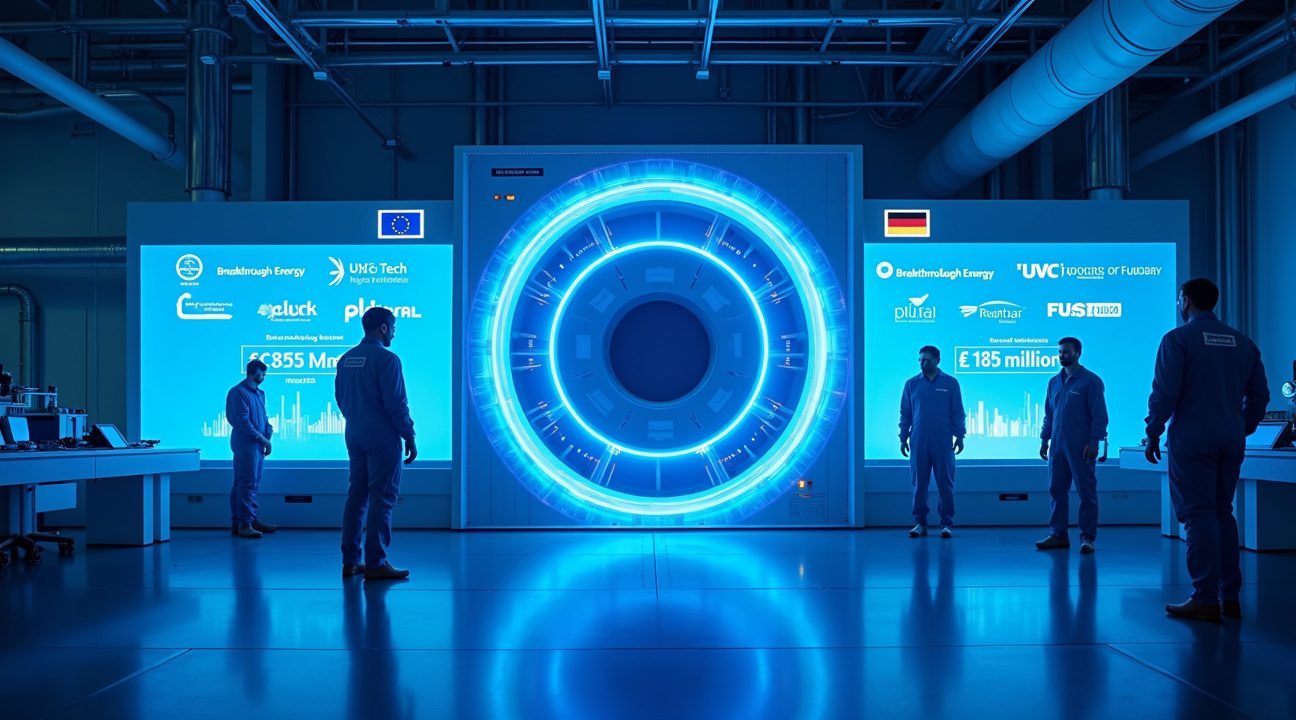
Building on Wendelstein 7-X’s Historic 8-Minute Plasma Achievement
The Stellaris reactor draws directly from groundbreaking work at the Wendelstein 7-X facility, which stands as the world’s most sophisticated stellarator design. I believe this technological foundation provides an exceptional springboard for commercial fusion energy, something that seemed impossible just decades ago.
Wendelstein 7-X achieved a remarkable milestone in 2023 by sustaining a continuous plasma discharge for eight full minutes—the longest duration ever recorded for a stellarator configuration. This achievement demonstrates that stellarator designs can maintain stable plasma conditions for extended periods, addressing one of the fundamental challenges that has historically plagued fusion research. The eight-minute record proves that complex magnetic field geometries can successfully confine superheated plasma without the sudden disruptions that often plague tokamak reactors.
Strategic Investment Creates Innovation Ecosystem
German and European Union agencies invested more than €1.3 billion in Wendelstein 7-X development between 1995 and 2023, creating a comprehensive research infrastructure that extends far beyond the reactor itself. This substantial funding established:
- Specialized manufacturing capabilities
- Advanced diagnostic systems
- A skilled workforce that now supports the next generation of fusion projects
The investment cultivated partnerships between academic institutions, engineering firms, and technology suppliers across Europe, forming a network that continues to drive innovation in magnetic confinement fusion.
The financial commitment also enabled development of unique superconducting magnet technologies, precision manufacturing techniques, and control systems that manage plasma conditions with unprecedented accuracy. These technological advances represent decades of accumulated knowledge that directly benefits the Stellaris project, much like how scientific breakthrough in space technology often builds upon previous missions and discoveries.
Proxima Fusion is strategically positioned to leverage this existing infrastructure during their current development phase from 2022 to 2025. The company focuses primarily on magnetic design optimization and overall system architecture for Stellaris, building upon proven concepts from Wendelstein 7-X while incorporating improvements for commercial operation. Access to W7-X data, manufacturing expertise, and operational experience significantly reduces development risks and accelerates the timeline for bringing stellarator technology to market.
The established ecosystem includes specialized suppliers who understand the precise requirements for stellarator construction, from custom superconducting coils to ultra-high vacuum components. Research facilities across Germany and Europe provide testing capabilities that would otherwise require years to develop and hundreds of millions of euros to establish independently. This collaborative network enables Proxima to concentrate resources on commercial optimization rather than fundamental research, similar to how artificial intelligence paving the way for the future benefits from decades of computational research.
Wendelstein 7-X’s operational data provides crucial insights for Stellaris design decisions, particularly regarding plasma control algorithms, heating systems, and materials performance under fusion conditions. The facility’s extensive diagnostic capabilities have generated detailed understanding of plasma behavior in complex magnetic geometries, information that directly informs design choices for commercial-scale stellarators.
The transition from experimental success to commercial viability requires careful optimization of every system component, from magnetic field configuration to power extraction methods. Proxima benefits from W7-X’s comprehensive documentation of operational procedures, maintenance requirements, and performance characteristics that inform realistic projections for commercial plant operations. This knowledge transfer represents perhaps the most valuable aspect of the substantial European investment in stellarator research, providing a clear pathway from scientific achievement to practical energy generation by 2031.
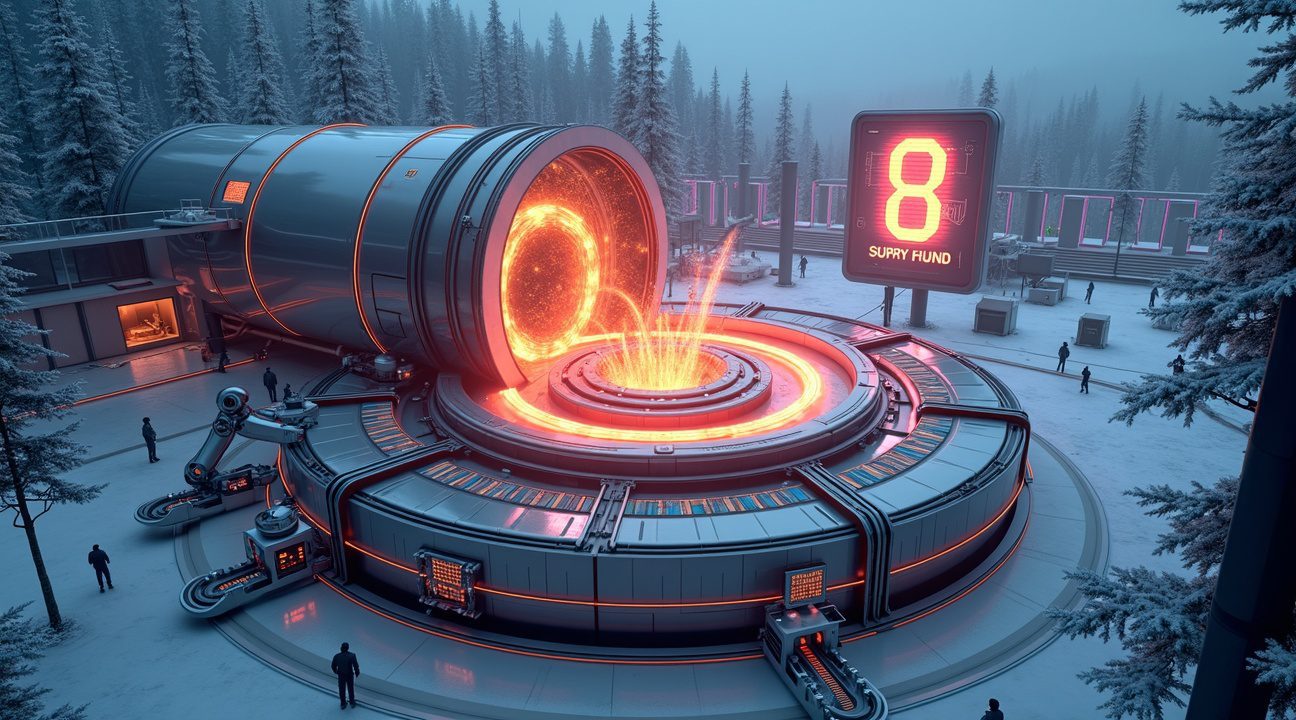
Europe’s Strategic Advantage in Stellarator Technology Leadership
Europe has positioned itself at the forefront of stellarator technology development through decades of institutional expertise and coordinated policy frameworks. Germany, France, and Switzerland have established themselves as the primary drivers of this advanced fusion approach, building on research foundations that stretch back to the original stellarator concepts developed in the 1950s.
The European Atomic Energy Community (EURATOM) has created harmonized regulatory frameworks that streamline research collaboration and technology sharing across member nations. This unified approach eliminates many of the bureaucratic barriers that typically slow scientific progress, allowing European teams to move more rapidly from theoretical research to practical implementation. I’ve observed how this regulatory coherence gives European fusion projects a significant time advantage over fragmented international efforts.
Industrial Infrastructure and Material Readiness
European fusion initiatives have strategically focused on designs that utilize currently available materials and existing industrial supply chains. This practical approach distinguishes European stellarator development from more experimental fusion concepts that require breakthrough materials or manufacturing techniques. Key advantages include:
- Established supply networks for specialized alloys and magnetic components
- Proven manufacturing capabilities for precision magnetic confinement systems
- Existing workforce expertise in high-precision engineering and plasma physics
- Mature quality control systems for nuclear-grade components
Pan-European collaboration amplifies these individual national strengths through shared expertise and resource pooling. Research teams regularly exchange personnel and share experimental data, creating a collective knowledge base that no single nation could develop independently. This collaborative model has accelerated problem-solving and reduced redundant research efforts across the continent.
The strategic positioning of stellarator technology within Europe’s energy transition plans creates additional momentum for development. German policymakers view stellarator fusion as a natural complement to the country’s Energiewende initiative, which has already transformed the nation’s energy landscape through massive investments in renewable infrastructure. Unlike solar and wind power, stellarator fusion offers consistent baseload power generation without weather dependency, filling a critical gap in renewable energy portfolios.
European stellarator programs also benefit from reduced political pressures compared to conventional nuclear power development. Public acceptance remains higher for fusion technology because it produces no long-lived radioactive waste and carries no risk of meltdown scenarios. This social license to operate provides European researchers with stable funding and public support that enhances long-term project viability.
The continental approach to stellarator development creates synergies with other advanced technologies emerging across Europe. Research into artificial intelligence and space technology contributes computational modeling capabilities and materials science advances that directly benefit fusion reactor design. These cross-pollination effects strengthen Europe’s overall technological ecosystem while advancing stellarator development timelines.
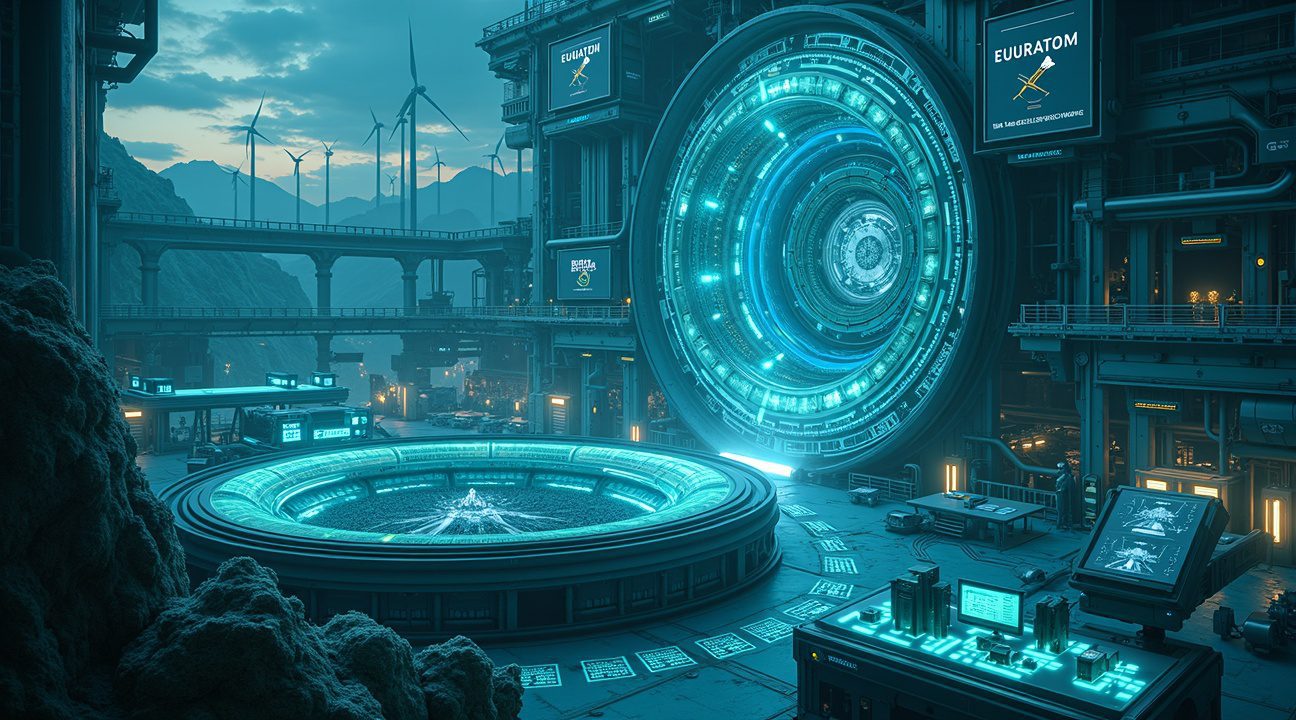
Engineering Hurdles and Long-Term Commercial Viability Questions
The ambitious timeline for Germany’s stellarator fusion reactor faces substantial technical obstacles that stretch beyond conventional engineering challenges. High-precision magnet geometry stands as perhaps the most critical hurdle, requiring manufacturing tolerances measured in fractions of millimeters across massive superconducting coils. These twisted magnetic field coils must maintain their exact positioning while subjected to enormous electromagnetic forces and extreme temperature variations.
Advanced cooling systems present another formidable challenge, as maintaining superconducting magnets at temperatures near absolute zero while managing the intense heat generated by fusion reactions demands unprecedented thermal management solutions. Material durability concerns compound these issues, since reactor components must withstand constant bombardment from high-energy neutrons and plasma particles over decades of operation. Current materials science hasn’t yet produced components capable of such extended exposure without significant degradation.
Computational and Manufacturing Requirements
Overcoming these obstacles requires sophisticated computational modeling that can simulate complex plasma behaviors and magnetic field interactions with extraordinary precision. I’ve observed how breakthrough scientific advances often depend on computational power that pushes current technological boundaries. High-performance manufacturing processes must achieve tolerances previously reserved for space-grade components while scaling to industrial production levels.
The manufacturing challenge extends beyond precision to repeatability and cost-effectiveness. Each stellarator reactor requires thousands of precisely shaped components that must function flawlessly together. Traditional manufacturing approaches can’t meet these demands economically, necessitating new production methodologies and quality control systems.
Commercial Timeline Skepticism
Critics maintain that commercially viable fusion energy remains decades away despite recent progress and optimistic projections. Many energy analysts argue that fusion technology won’t meaningfully contribute to climate goals until after 2045 or 2050, potentially missing critical windows for carbon reduction targets. The complexity of stellarator systems, while offering certain advantages over tokamaks, adds layers of technical difficulty that could extend development timelines.
Economic viability presents additional concerns, as fusion reactors must compete with rapidly declining costs of renewable energy sources and storage systems. Solar and wind technologies continue improving their cost-effectiveness while fusion development remains expensive and uncertain. Some experts question whether fusion can achieve competitive energy costs even after technical hurdles are resolved.
Proxima Fusion has outlined a long-term strategy focused on modular reactor construction and repeatable industrial-scale production to address these challenges. Their approach emphasizes standardizing components and manufacturing processes to reduce costs and complexity while enabling mass production. Modular designs could allow incremental capacity expansion and simplified maintenance procedures compared to monolithic reactor architectures.
The transition from laboratory-based research to practical, deployable energy systems requires fundamental shifts in how fusion reactors are conceived and built. Current experimental facilities prioritize scientific understanding over commercial considerations, but practical power plants must emphasize reliability, maintainability, and economic operation. This shift demands new design philosophies that balance scientific advancement with technological innovation and commercial practicality.
Scalability and manufacturability remain essential factors for achieving widespread adoption of fusion technology. The industry must develop supply chains capable of producing specialized components at scale while maintaining quality standards. Training skilled technicians and engineers for fusion plant operation and maintenance adds another layer of infrastructure development requirements.
Risk management strategies must account for the substantial capital investments required for fusion development and deployment. Private investors and government funding agencies need confidence in technical feasibility and commercial returns before committing resources at the scale required for fusion’s commercial success. The technology’s complexity creates numerous potential failure points that could derail development programs or delay commercial deployment.
Despite these challenges, continued progress in computational modeling, materials science, and manufacturing techniques provides reasons for cautious optimism about fusion’s eventual commercial viability. However, realistic assessments suggest that significant technical and economic hurdles must be overcome before fusion energy can fulfill its promise of limitless clean power.
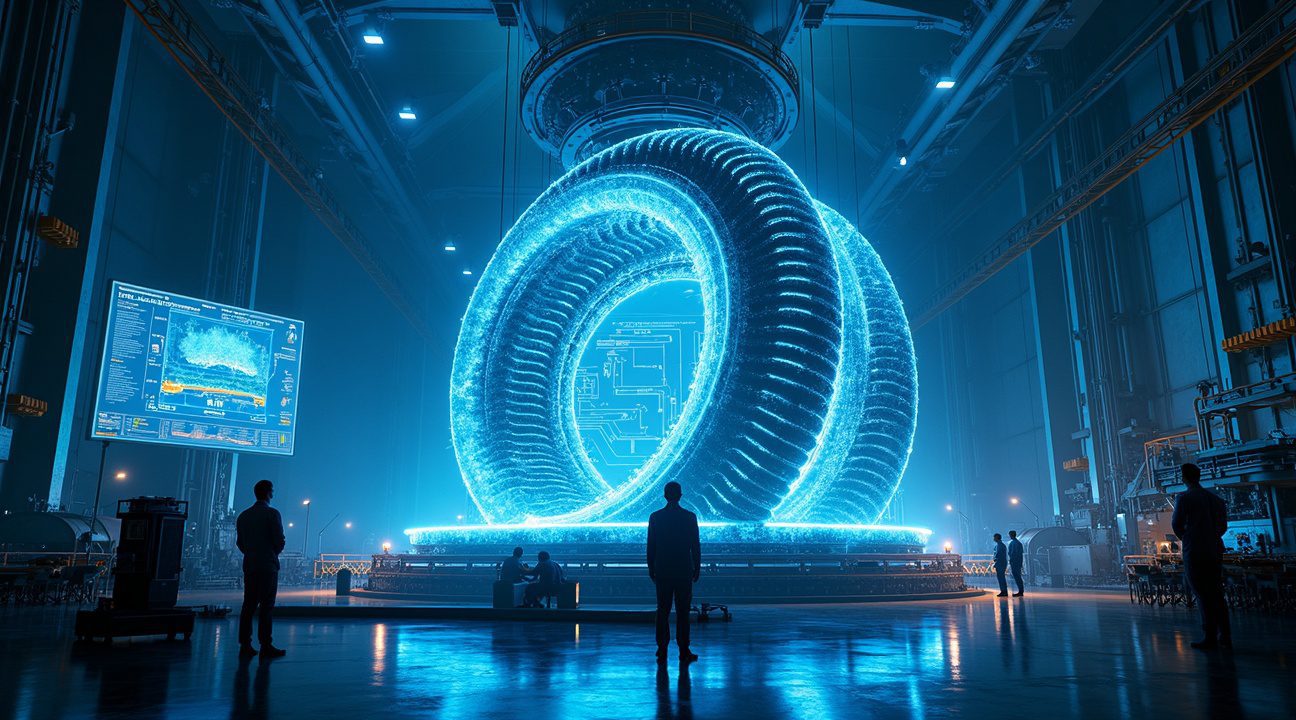
Sources:
World Nuclear News, “German stellarator fusion design concept unveiled”
Binding Energy, “Stellarator Fusion Energy – How Proxima Fusion Reimagines …”
Clean Energy Wire, “Investors bet record €130mln on German fusion startup Proxima”
Wikipedia, “Proxima Fusion”

